Tropical Rainforest Heritage of Sumatra
By Sandra Potisek
What is the Tropical Rainforest Heritage of Sumatra?
The Tropical Rainforest Heritage of Sumatra comprises three national parks in the Indonesian Sumatra island’s Bukit Barisan mountain range: Gunung Leuser National Park, Kerinci Seblat National Park and Bukit Barisan Selatan National Park. They are home to dozens of endemic species, including the Sumatran orangutan, and cover a total area of 2.5 million hectares (9650 square miles), making it one of the biggest conservation areas in Southeast Asia. The area also includes Indonesia’s highest volcano, 3,805 m (12,484 ft) tall Gunung Kerinci, and Lake Gunung Tujuh, the highest lake in Southeast Asia.
Disclosure: This article contains affiliate links. Making a purchase through an affiliate link will mean a small commission for this website. This will not affect your price. Privacy policy.
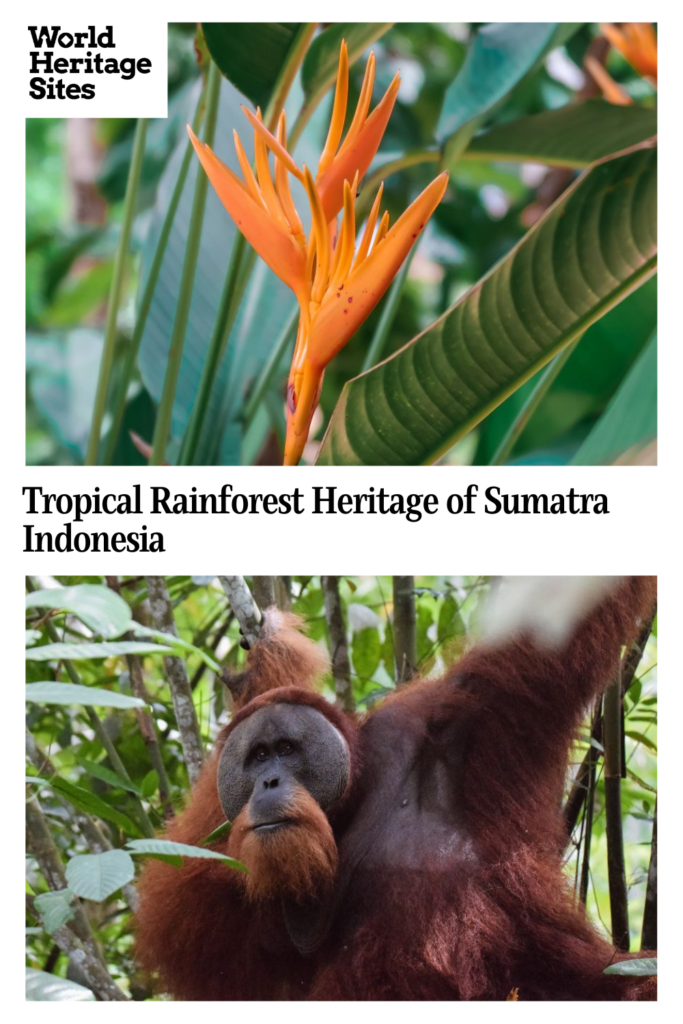
Why is the Tropical Rainforest Heritage of Sumatra a UNESCO World Heritage site?
All three national parks comprising the Tropical Rainforest Heritage of Sumatra provide biogeographic evidence of the island’s evolution and have exceptional biodiversity. The area covers everything from lowland rainforest to sub-alpine low forest, and according to UNESCO’s website, there are 10,000 species of plants, some 580 species of birds, and 201 mammal species that live there. Many of them are endemic and endangered, including Sumatran orangutans, Sumatran elephants, Sumatran rhinos, Sumatran striped rabbits and Sumatran tigers.
This UNESCO site was placed on UNESCO’s List of World Heritage in Danger in 2011. It is threatened by road development plans, illegal logging, encroachment and poaching, as well as “failure to effectively enforce existing laws.” Efforts are underway to reduce poaching and enforce laws.
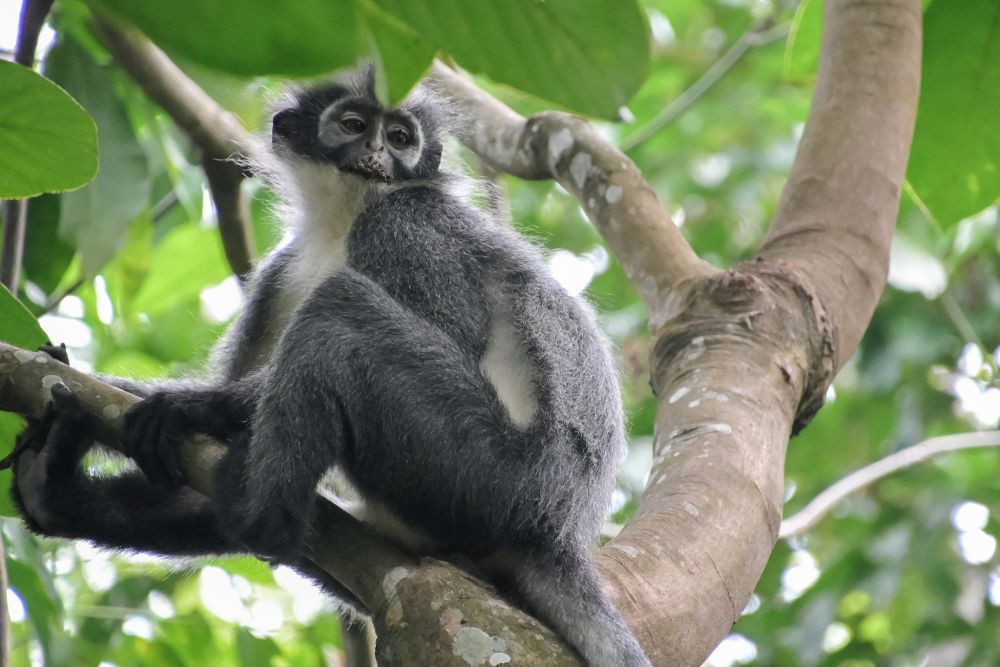
What can you expect on a visit to these three national parks in Sumatra?
Whether you visit the Gunung Leuser National Park, the Kerinci Seblat National Park or the Bukit Barisan Selatan National Park, you can expect to be surrounded by the virgin jungle and natural beauty of some of the world’s rarest flora and fauna – a playground for all nature lovers!
Gunung Leuser National Park
The most visited is Gunung Leuser National Park, one of the richest tropical forests known for its Sumatran orangutan treks and a former orangutan sanctuary in Bukit Lawang. It is one of the last places on earth with critically-endangered orangutans living in the wild. Because of the great differences in altitude and the diversity in soil, the Gunung Leuser National Park also has an enormous number of plant species. Forty-five percent of all recorded plant species in the West Indo-Malayan region are found in this area, including Rafflesia Arnoldi and Amorphophallus titanum, the biggest and the highest flower in the world.
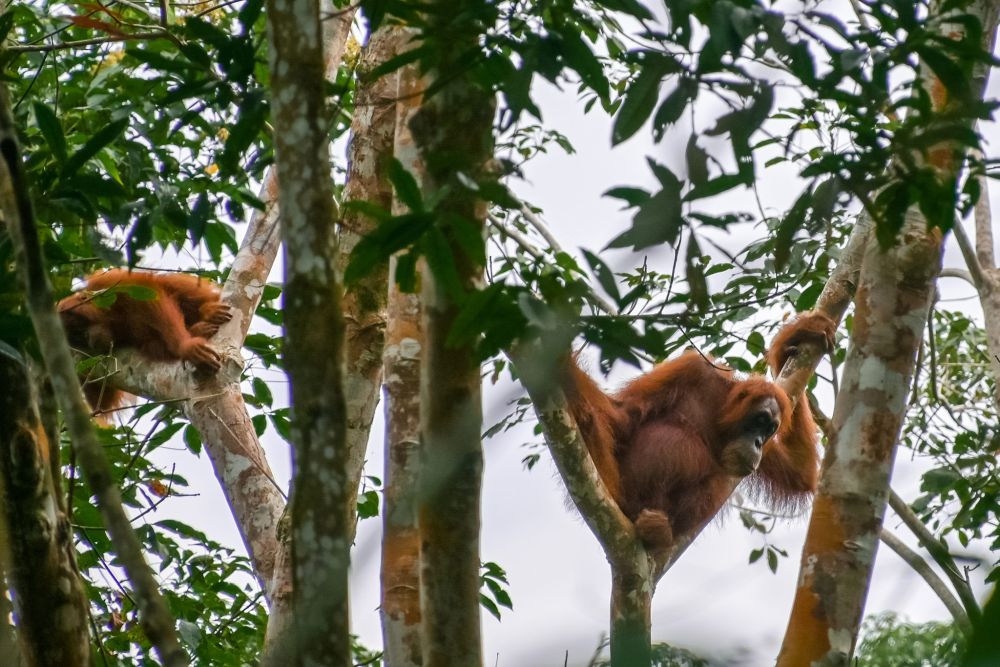
Kerinci Seblat National Park
Kerinci Seblat National Park, on the other hand, is one of the most important tiger reserves in the world and home to many rivers, caves, lakes and wetlands, as well as the highest active volcano (Gunung Kerinci) in Southeast Asia.
Bukit Barisan Selatan National Park
Covered by montane and lowland tropical forest in the central area, and mangrove forest in the coastal area, Bukit Barisan Selatan National Park is the most important watershed for southern Sumatra. The most celebrated animal in the park is the Sumatran rhino, with a quarter of Sumatra’s elephants living in the park as well.
Is the Tropical Rainforest Heritage of Sumatra worth visiting?
Going for a trek in one of the tropical rainforests of Sumatra is a once-in-a-lifetime kind of experience every nature and wildlife lover should put on their bucket list. Due to its remoteness, poor infrastructure and difficulty to reach certain areas, I would recommend only adventurous travelers passionate about nature and wildlife to visit, as the time and the effort the trip requires may not be worth it to a casual traveler.
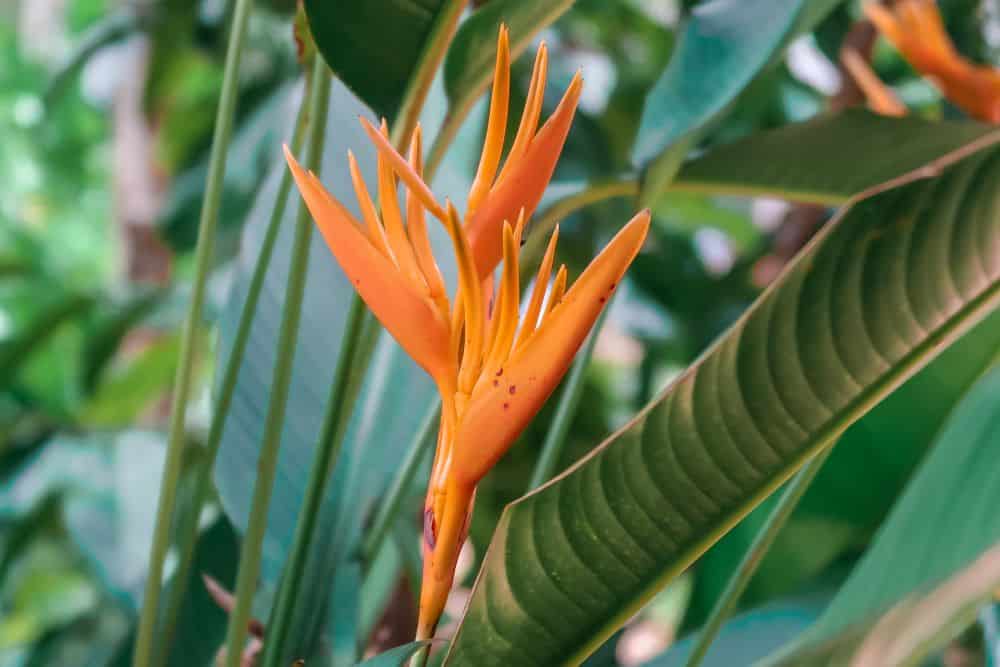
Some treks are very challenging, so a good fitness level is required, but if you’re a casual traveler who would still like to experience the beauty of this remote place, I recommend a visit to Bukit Lawang, a destination near Gunung Leuser National Park. It’s the most developed in terms of infrastructure and tourism, with short organized hikes available for travelers of almost all ages and fitness levels. I’d also advise to combine the visit with some other sights in Sumatra, especially if you’re only doing a day-long hike as opposed to spending a week or more trekking in the area.
Use the map below to book accommodations in Bukit Lawang:
Tips for visiting the Tropical Rainforest Heritage of Sumatra
- If you’re going on a trek, make sure to bring hiking boots. Running shoes are also okay for short hikes from Bukit Lawang.
- Wear breathable clothing to combat humidity, ideally long trousers and an airy long-sleeved top to protect yourself from mosquitoes.
- Speaking of mosquitoes, a strong repellent is a must.
- Bring plenty of bottled water to avoid dehydration.
- Pack a light raincoat, as afternoon thunderstorms with heavy rain are a daily occurrence.
- Don’t expect warm running water or aircon at your accommodation.
- Bring cash, as the closest cash machines are 10+ km (6+ mi) away.
- Despite the areas being protected, beware that illegal lodging, deforestation, poaching and unethical wildlife tourism are still taking place. When booking tours, please make sure to do your research and support sustainable, ethical ecotourism providers only.
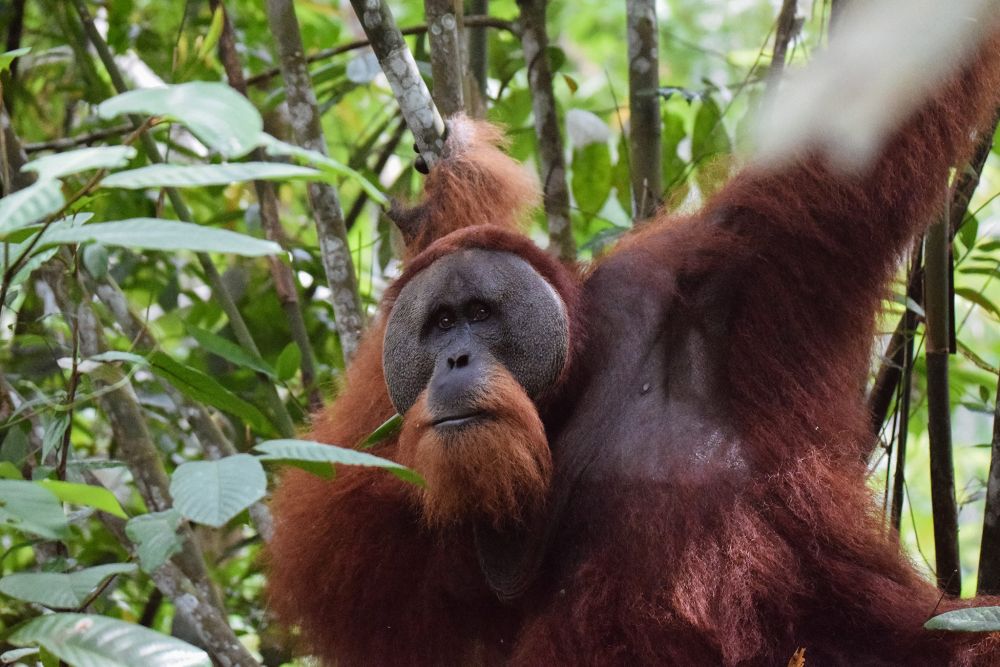
Where are these three national parks?
All three national parks are located on the island of Sumatra, Indonesia, but aren’t next to each other. Here’s how to reach them.
By car:
Due to poor infrastructure, it’s best to hire a private transfer with a driver.
- Bukit Lawang in Gunung Leuser National Park is a four-hour drive from the city of Medan.
- Kerinci Seblat National Park’s Sungai Penuh can be reached in eight hours from Padang City.
- The journey from Bandar Lampung to Selatan National Park’s main entry point, Kota Agung, takes about three hours.
By public transport:
To get to Bukit Lawang in Gunung Leuser National Park, you can take the local bus (ALS) from Kuala Namu International Airport in Medan to Binjai city, which leaves every 15 minutes. Then take a tuk-tuk to Tanah Lapang Binjai, and from there the L300 or PS bus directly to Bukit Lawang. Alternatively, you can take a local bus from Medan City’s ‘Mawar’ bakery to Pinang Baris, where you can catch the public bus to Bukit Lawang. It stops at the bus terminal in Gotong Royong, a village just 5 minutes from Bukit Lawang, from where you can take a tuk-tuk to Bukit Lawang. The entire trip takes over four hours.
Unfortunately, there’s no public transport available from Padang to Kerinci Seblat National Park. However, you can book a seat in a bigger vehicle through Safa Marwa or Ayu Transport. They pick you up wherever you like in Padang, excluding the airport, and depart the city twice daily. They will take you as far as Sungaipenuh in the middle of Kerinci, so if you are planning on doing one of the treks further down south, you’ll need to arrange for a driver to pick you up for the final leg of the trip. The journey takes eight hours or more.
To reach Selatan National Park, you can take a bus from the Rajabasa Terminal in Bandar Lampung to Kota Agung. The trip takes approximately two to three hours.
For more visitors’ information on the Tropical Rainforest Heritage of Sumatra, see Indonesia Travel’s website.
Have you been to any of these three national parks? If so, do you have any additional information or advice about this UNESCO World Heritage site? Please add your comments below!
